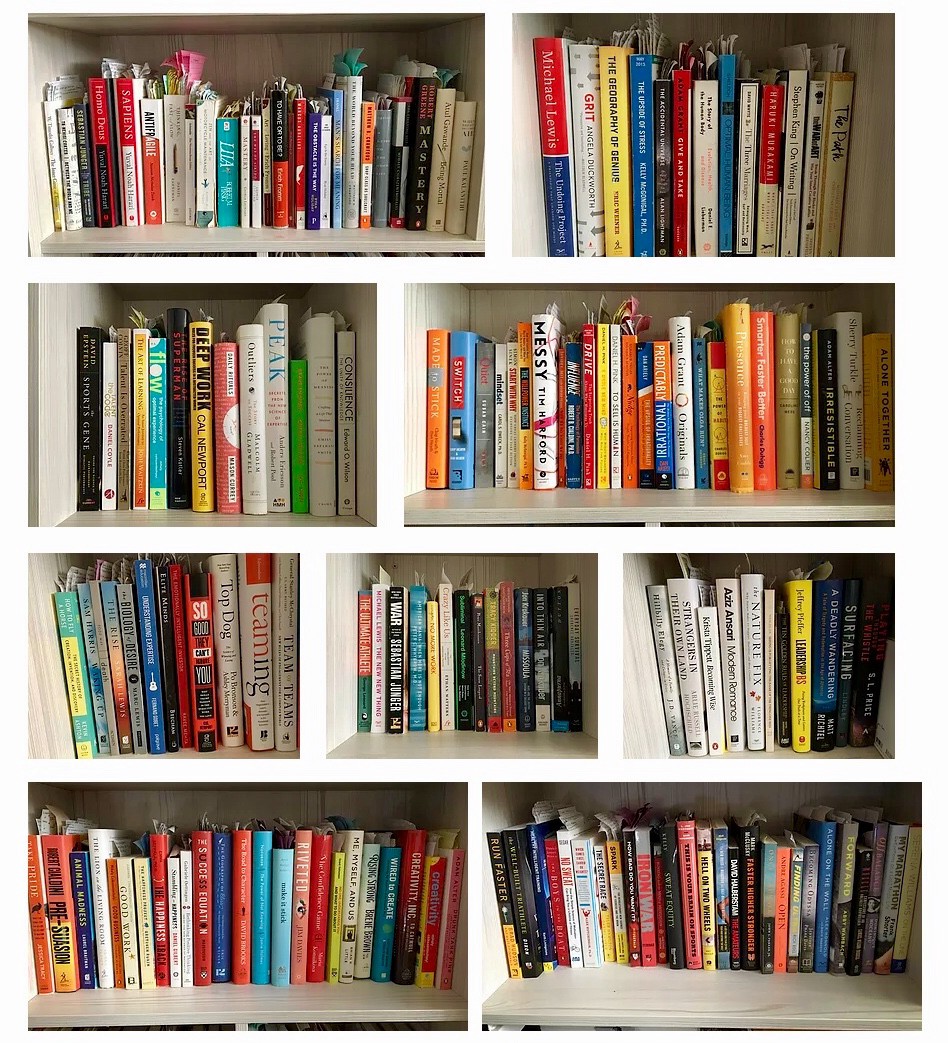Whenever I share books I’ve enjoyed, like this recent post on my favorite non-fiction books from 2017, I’m always asked about the little “notes” that are popping out from multiple pages. These little notes are an integral part of my reading — and really, thinking — process, which I’ll document here. Before diving in, it’s important to note that there are many ways to read and acquire knowledge; this is simply the method that works best for me.
First thing is first: Whenever I’m reading a book — be it fiction or nonfiction, science or philosophy, biography or history — I tend not to view that book in isolation. Instead, I view it as a potential input to my existing web of ideas and knowledge. This sets the tone for me to take reading as a serious, yet still thoroughly enjoyable, endeavor.
As I’m reading a book and come across something interesting — this could be the introduction of a new concept; something that supports my current thinking; something that refutes my current thinking; or even a specific powerful quote — I underline or highlight that text on the page. Then, I take a traditional sticky note, flip it upside down, and write a note to myself referencing the particular string of text. This note could be a short cue, part of the text verbatim, or how I’m encoding a new concept in my mind. I’ll then stick that note upside down on the page, so whatever I wrote emerges from the top of the book.

I’ll go through an entire book in this manner. By the time I’m done, a particularly engaging book will have tons of notes.

People often ask me why I almost exclusively read hard-copy books over ebooks. The answer is twofold.
- I find the physical act of highlighting/underlining and writing in a book helps me retain the information better than doing these things virtually.
- When I’m done reading, I organize books — on physical shelves — by topic and the influence they had on me.
In this way, my bookshelf becomes like a physical manifestation of the neural networks in my thinking brain. The ideas are literally connected in concrete form. This is very helpful when it comes time to think — be it for a writing project, coaching client, consulting or speaking engagement, or, most often, a personal conundrum (these examples are mine, but I’m sure you can come up with some that are appropriate to you). When I need some help thinking, and this happens often, I’ll go to my bookshelf and start searching for insight in the relevant section of the shelf. The “sections” are my own personal cuts of knowledge: formative books; psychology; philosophy; adventure; history; biography; books on writing; sports; fiction that taught me a lot about real-life; etc. These “cuts” are personal since they are intimately related to how my brain works. If you end up following this method, don’t just copy my cuts. Make your own!

When I pull out books, I immediately start reading through the notes. They act as cueing mechanisms, swiftly taking me back to the parts of the book I found most interesting and important. I can go from book to book and, within minutes, be immersed in deep thought with the guidance of the conversations I previously had with authors.
Taken together, this process has two enormous benefits:
- It helps me get more out of books as I’m reading them: instead of just receiving information as I read, when I’m taking notes and connecting ideas I feel like I’m in a conversation with the author. This is wonderful for both reader and author!
- It helps me get more out of books when I’m done reading them: easy reference and recall makes me more prone to reference and recall.
Like I wrote in opening, there is no one “right” way to read. You’ve got to find what works for you. That said, I’d encourage you to come up with a system that makes reading an active and ongoing process. Doing so makes the experience of reading itself far more enjoyable, and it also increases the chance that what you read will influence your work and life in meaningful ways.


